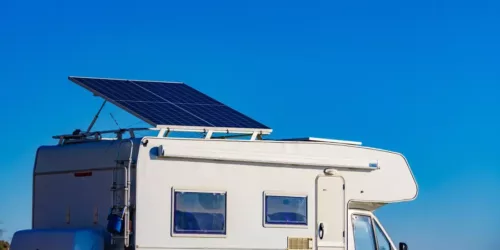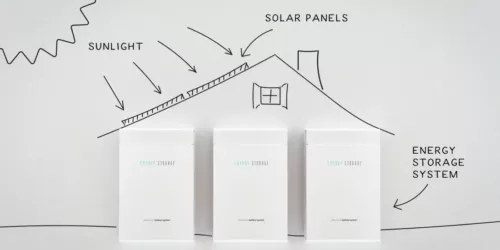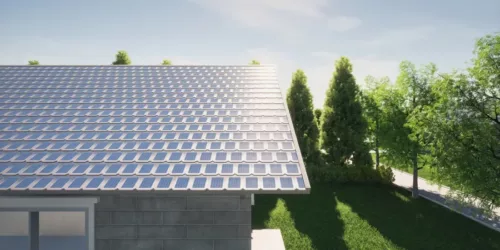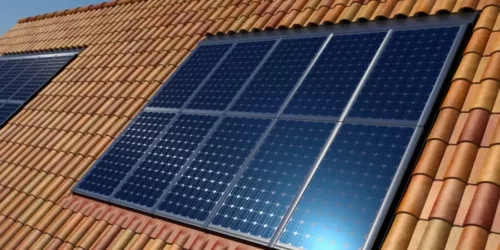Solar Volume - How Many Solar Panels Do I Need?
If you’re thinking about getting off the main power grid and making a move to solar power, you’re probably wondering, “how much solar do I need?”
While there’s no “one size fits all” answer, you can determine how many solar panels to power a house by reading ahead. We explain how much electricity the average UK home uses, how to calculate your own usage, the differences between panel types and sizes, and a lot more.
Are solar panels worth it? We certainly think so.

What's On This Page?
Click the links below and head straight to a specific section of the article.
- Is It Sunny Enough in The UK For Solar?
- How Much Electricity Does The Average UK House Use?
- How Many Solar Panels Do You Need To Power A House?
- How Many Solar Panels Do I Need for My Home?
- Monocrystalline vs Polycrystalline Solar Panels
- What Size Solar Panels Do I Need?
- How Much Does It Cost For Solar Panels?
- How Much Solar Do I Need?
Is It Sunny Enough in The UK For Solar?
This is a very common question, and the answer is a resounding yes! Most areas of the UK get at least four hours of sun a day throughout the year, which means that solar panels will definitely benefit your home. A solar battery storage system can help you bank solar power during the sunnier times of year for use in the autumn and winter.
The following are the average ‘sun hours’ (in which the sunlight reaches at least 1000 watts of energy per square meter) needed to calculate the best solar panels for your needs.
Speak to local installers for more information about how the average daily hours of sun will affect how much solar power you’ll need. Simply search for “solar power for home” followed by your town and county name.
How Much Electricity Does The Average UK House Use?
Before you start talking about how much solar you need for your home, you need to determine how much electricity you use. Let’s start by looking at how much electricity an average UK house uses.
According to the Department of Business, Energy & Industrial Strategy, most UK houses use around 3,700 kWh of electricity per year. This number is just an average – if you live in a small flat, your usage will likely be lower. A large country manor will undoubtedly be higher!
If you live in a new build, your energy consumption is likely lower than in an older home. Mid-terrace homes tend to use less heat (and therefore less electricity) than end terrace and detached homes.
How Many Solar Panels Do You Need To Power A House?
Before you can answer how many solar panels you need to power a house, you need to know how much electricity you regularly use and will therefore need.
Most solar panels for residential homes produce between 250 and 400 Watts per hour. A typical panel ranges in size from 1kW to 5kW. Once you account for cloudy days and lost power, a system on the higher end (5kW) produces roughly 4,500 kWh per year.
Of course, this depends on your lifestyle and needs. Factors to consider include:
- How big is your house?
- How many people live in your house?
- Do you use electricity alone, or gas as well?
- Do you work from home?
- How well insulated is your house?
- Do you plan to use solar for all of your energy, or just a percentage?
- How much electricity do you typically use?
To answer this final question, you'll have a look at your last year of electricity bills. Be sure to notice the differences between December and July – you use a lot more in winter than in summer.
Another way to assess your electricity usage is with a smart meter. This is the most reliable way to see exactly how much energy you’re using on a typical day, week, and month, removing the guesswork on your monthly bill. In addition, smart meter data will help you choose how many solar panels to power a house.
How Many Solar Panels Do I Need for My Home?
As we saw above, the average UK home uses around 3,700 kWh of electricity per year. Therefore, if you fall within the average, you’ll probably do well with a 5kW system, or you could maybe even make do with a 4kW system.
A 4kW system usually uses between 14 to 16 panels on the south-facing side of your roof. This number can go up or down depending on the panel wattage you choose (more information on this below). Head up to the roof or look at your blueprints to determine whether you can fit all of these panels on the roof. You can also speak to your local installer.
Of course, if your home is much larger, you have a very large family, or you run a business from your home, you will need more panels. But, again, you can learn this information by looking at your annual electricity bills or smart meter readings.
It’s always a smart idea to bank some of your solar electricity to use on overcast days. You can do this by installing a solar battery storage system, which will save extra power you don’t use on the sunniest days for use when the sun is nowhere to be found. This is ideal for those dark and cloudy winter months.
Here is a simple chart that can help you determine how many solar panels you need for your home. The following are estimates of your required kW (to power your home solely with solar) based on the number of people who live in your home.
Monocrystalline vs Polycrystalline Solar Panels
The two most common solar panel choices in the UK are monocrystalline panels and polycrystalline panels. Polycrystalline panels tend to take up more space than monocrystalline panels, but they are the cheaper option.
Here are some of the main differences between monocrystalline and polycrystalline solar panels.
Monocrystalline Solar Panels
- Not affected by weather as much as other options
- The more expensive option, because they use purer silicon than other panels
- The pure silicon makes them more efficient
- They take up less room than polycrystalline panels
- Efficiency rate of between 15% and 20%. This means they can use 15 – 20% of the sun’s energy to create usable energy for your home
- Black in colour
Polycrystalline Solar Panels
- Polycrystalline panels are more affected by fluctuating weather
- They are cheaper – though both are made from silicon, polycrystalline uses fragments melted into wafers, while monocrystalline uses silicon bars cut into wafers
- Since they use less pure silicon, they are less efficient
- They take up more room than monocrystalline panels
- Their average efficiency rate is between 13-17%
- Blue in colour
What Size Solar Panels Do I Need?
Now that you have determined how many panels you need and whether you prefer monocrystalline or polycrystalline panels, you need to choose the size.
Your first consideration is how many square metres you have available on your roof. The next thing you need to do is look at different brands. That’s because different solar panel brands generate different amounts of energy, depending on wattage and rating.
For instance, a 250 watt panel can generate up to 250 watts per peak sun hour. Similarly, a 300 watt solar panel is able to generate up to 300 watts per peak sun hour. The wattage of your panels will depend on how much electricity you need and how much space you have on your roof.
Let’s say you need to generate 4 kWh per day (4,000W/hrs). If you select 250 watt panels, you’ll need 16 panels. This usually requires a surface area of at least 25m².
If you use 350 watt panels, you will only need 12 panels, which usually requires a surface area of 23m². Therefore, if your roof only has a limited amount of space, you need to go for fewer panels that each have a higher wattage.
You’ll also need to pay attention to panel weight. Each panel weighs around 20 kilograms, which can really add up. If you have any doubts about your roof's ability to shoulder this weight, you’ll need to speak to your installer. If they have concerns, they may then recommend you have a surveyor assess your roof.
Here is a simple table to demonstrate the average size and weight of different panels. Remember – this will vary based on the material (polycrystalline vs monocrystalline) and the brand.
How Much Does It Cost For Solar Panels?
We’re finally at one of the most important considerations for anyone planning to install solar panels for home use – the cost! The cost of solar panels in the UK depends on many different factors, including the size and type of panels, how much electricity you need, and where you live in the country. On average, the cost varies between £5,000 to £13,000 for a solar panel system between 3kW and 10kW.
Here are some of the average solar panel system prices across the UK, calculated based on 250W panels. These prices will vary based on the brands and installers used.
You can also compare the data in the interactive graph below.
Remember – you can also get paid for excess energy that your solar system generates under the Smart Export Guarantee (SEG). Over time, these SEG payments can offset the cost of the initial installation.
How Much Solar Do I Need?
As you can see from the information above, answering this question is not cut and dry. You need to assess a few different factors before you can make the decision. Though the information may look complicated at first, it’s all fairly straightforward. Speak to your installer if you have any questions – they’ll be able to walk you through the entire process.
To find out how much it would cost to install solar panels, just pop in a few details and you’ll receive solar panel quotes from local, professional installers.
Related articles
View all Solar Panel articles
A Complete Guide to Caravan Solar Panels

Are Solar Panels Worth It in Wales?

Project Solar UK: Company Overview

Battery Storage for Solar Panels Explained

Solar Panel Kits Explained - Everything You Need to Know

Are Solar Roofing Tiles Worth It?

A Complete Guide to Roof Integrated Solar Panels







